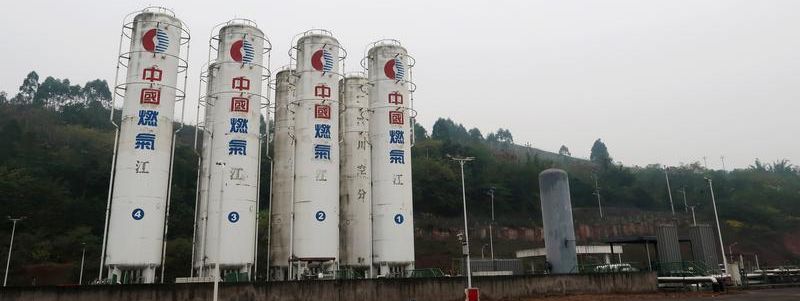IT’S JUST A MATTER of time before capital markets set their sights on Canada’s energy storage (ES) industry.
“Energy storage in Canada has achieved commercialized scale arena with lots of bankable solutions emerging,” says Jeremy Goertz, VP, Construction & Business Development at Baden, Ontario-based Saturn Power Inc., Canada’s largest solar energy developer, which has recently diversified into battery ES systems. “The market is beginning to take off.”
It’s a global thing. According to Navigant Research, the world’s ES market was expected to increase from $1.3 billion in 2016 to $16.5 billion in 2024. With giant players like Panasonic, General Electric, Siemens, Mitsubishi, Samsung and the oil companies increasing their involvement exponentially, it won’t be long before Canadian energy storage companies — whose technologies run the gamut from pumped hydro, compressed air energy storage, flywheels, lithium ion batteries, hydrogen power and gas storage — become M&A targets. And that’s all the more so because attractive targets in markets such as Europe are becoming increasingly scarce.
“The European market is very mature and many companies went out of business after subsidies were ended,” says Sven Walker at Dale & Lessmann LLP in Toronto. “Chinese or South Korean businesses acquired quite a few of them.”
The past 12 months in the global M&A space saw Italian electricity and gas utility Enel buying US-based Demand Energy; geothermal company Ormat Technologies Inc. acquiring ES start-up Viridity Energy Solutions, Inc. for US$35 million plus an earn-out; Finnish power-plant operator Wärtsilä purchasing US-based grid battery start-up Greensmith Energy; global generator rental company Aggreko taking over Germany’s Younicos for $52 million; and Trane, an HVAC manufacturer and subsidiary of Ingersoll Rand, announcing its intention to buy CALMAC, the largest ice-based ES system in the US. Otherwise, Siemens and AES announced the formation of Fluence, an ES joint venture.
Among the more successful Canadian companies — and potential targets — are Mississauga’s Temporal Power Ltd., which has designed one of the world’s leading flywheel energy storage technologies; Hydrostor Inc., which has developed an hydrostatic pressure storage facility near the Toronto Islands; and Electrovaya Inc., also based in Mississauga and run by Sankar Das Gupta, an adjunct professor of electrochemistry at the University of Toronto, which has its sights set squarely on Bloomberg New Energy Finance projections that battery storage will be a $250-billion global market in 2040.
And it’s not only that giants are looming on the Canadian horizon; domestic companies are making their mark internationally as well. As far back as 2015, Electrovaya bought Daimler’s lithium-ion manufacturing facility, the largest in Europe. The deal gave Electrovaya Daimler’s proprietary ceramic separator technology to go with the hundreds of patents it already owned.
For its part, Saturn, which already has operations in Oregon, is looking abroad to countries such as Germany and China. “The markets that have the highest renewables penetration are typically the first-served by energy storage, and that’s where we see the greatest opportunities,” Goertz says.
A sure sign of ES’s rosy future in Canada is the advent of regulatory change. “Governments, particularly in Ontario and Alberta, are very interested in promoting the growth of energy storage and allowing utilities and their customers to partner on storage,” says David Stevens of Aird & Berlis LLP in Toronto. “This will result in a definite expansion of smaller scale energy storage.”
More particularly, the Ontario government proposed amendments in December to support expanded net metering opportunities. “Net metering allows customers to reduce energy costs by generating and storing energy as required at different times,” Stevens explains.
The net metering amendments followed on the promise made in September by Glenn Thibeault, Ontario Minister of Energy, that the government would "amend regulations to better value energy storage and allow it to compete on a level playing field with other technologies in our supply mix."
In November, Ontario’s Independent Electricity System Operator selected two new energy storage facilities that will see Hecate Energy Ontario Storage VII and Saturn Power Inc. provide a total of 55 megawatts of regulation service, a grid-balancing function that monitors and corrects short-term changes in electricity use to avoid outages.
The Alberta government has also been proactive, following through on its announcement in November 2016 that it intended to establish a “capacity” market in electricity by 2021. In such a market, generators compete to sell the energy they produce. By contrast, Alberta’s current “energy only” market is based on supply and demand: power distributors take energy from a power pool and pay the going pool price.
”Experts believe that a capacity market will likely spur the development of renewable projects paired with energy storage due to their potential to create capacity value,” Stevens says.
Tom Timmins of Gowling WLG in Toronto believes that regulatory change can only accelerate as renewables and ES emerge as substantial components of energy supply.
“The current system of regulation in Canada, the US and Europe really didn’t even contemplate energy storage as a part of the picture,” Timmins says.





